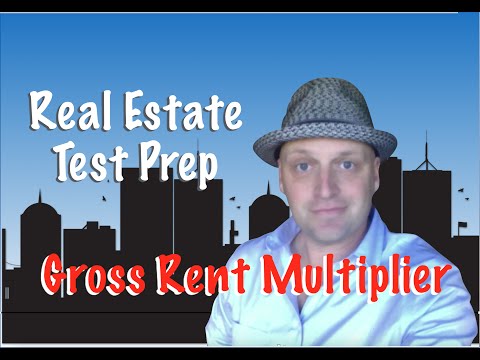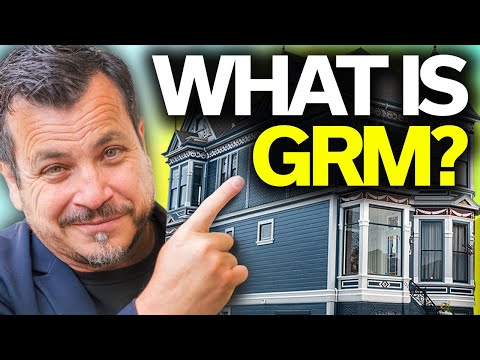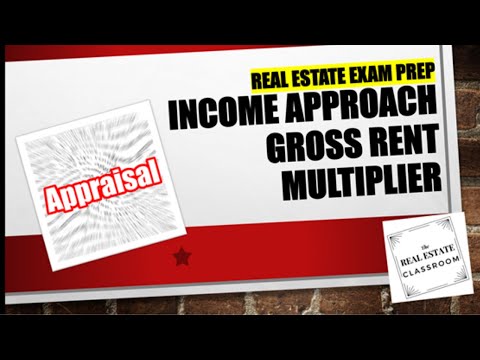Alright folks, let’s dive deep into the world of real estate investment. When you’re playing the property game, there’s no room for sloppy arithmetic or fluff-laden advice from your brother-in-law who dabbles in house-flipping. No sir! To truly succeed in this business, you need a trusty, tried-and-tested metric that’ll show you the direct route to Profitville. Enter our good friend, the Gross Rent Multiplier (GRM).
Understanding the Gross Rent Multiplier (GRM) in Real Estate
What’s all the hullabaloo about the gross rent multiplier? Grab a coffee, pull up a chair, and let’s get a handle on this hot-topic term that’s essential when you’re keen on pumping up profits.
Definition of Gross Rent Multiplier
Here’s the deal: the GRM is an important metric used in commercial real estate to determine the value of a property. Hold onto your hats, because it’s simpler than it sounds. Simply put, we derive the GRM by dividing the sale price of a property by its annual gross rental income. Like when you were back in the fifth grade, doing division in the classroom, only with more zeroes on the end!
Importance of GRM in Real Estate
Why is the GRM a big deal? Well, in a nutshell, it tells us how many years of gross rental income it would take to cover the cost of a property. Lower GRM means faster profit turnaround. The inverse is also true — a higher GRM equates to more time to recoup. Hence, GRM becomes the North Star for those navigating the real estate investment waters.

The Gross Rent Multiplier Formula Demystified
Alright then, let’s break down the gross rent multiplier formula.
Basic Gross Rent Multiplier calculation
Let’s say you see a property on the MLS (no idea what that acronym stands for? Head here) with a price tag that makes you wince. Before you turn tail, compute the GRM. Take the sale price, divide it by the annual gross rental income, and voila, you’ve got your GRM!
Practical example of GRM real estate computation
Stick with me here for a handy GRM grm real estate example. Let’s say a property you’re ogling is listed for $500,000. If you can pull in $50,000 a year in gross rental income, your GRM settles at 10. Aha, so you may now understand why your heart may sink at a hefty price tag, but always remember, it’s the GRM that will end up being your trusted compass.

| Subject | Details |
|---|---|
| Definition of GRM | A metric in real estate; calculated by dividing sale price by annual gross rental income. |
| Good Range of GRM | Between 4 and 7, depending on the type of rental market. A lower GRM indicates less time required to pay off the rental property. |
| Bearings with the 1% Rule | The 1% rule states that the monthly rent should equal or exceed 1% of the purchase price, adding additional perspective to GRM. |
| Relevance of 8.0x GRM | An 8.0x GRM implies approximately eight years to recoup the initial investment and start generating profit from a property. |
| Importance in Real Estate | Helps investors estimate property value and measure investment potential. Used to compare properties and assess market conditions. |
| Limitations of GRM | Doesn’t take operating expenses into account. Works best for similar properties in similar market conditions. |
| Relationship with Net Rent Multiplier | While GRM uses gross rental income, Net Rent Multiplier (NRM) uses net rental income after operating expenses. Resulting NRM gives a more comprehensive financial picture of potential investment profitability. |
Factors Influencing the GRM in Real Estate
Variation of GRM in Different Markets
Just like the know-it-alls who show up at a dinner party to discuss flower Drawings, the GRM can be different across different markets and property types. Location, demand, prevailing rental rates, and several other factors can impact the GRM.
Impact of the Type of Rental Market on GRM
You might be wondering: How does the type of rental market influence the GRM? Just like buying an abstract painting or bird Dawgs (whatever those are), the principles of demand and supply apply here. Higher demand coupled with limited supply can push up rental rates, subsequently affecting the GRM. You got it, capiche?

Recognizing a Good Gross Rent Multiplier
Hang on, we just woke up the number nerds! Don’t worry, we all wonder: What is a good gross rent multiplier?
Ideal Range for GRM
A “good” GRM depends heavily on the type of rental market your property exists in. But generally, you’ll want to shoot for a GRM between 4 and 7. A lower GRM means you’ll take less time to pay off your rental property.
Interpretation of GRM Values
If you land a property with a GRM below 4, shout it from the rooftops! Anything below 4 is as exciting as stumbling upon a hidden Da Vinci painting at a yard sale! On the flip side, a high GRM, say above 12? Well, that’s a stiffer mountain to climb, and could mean a riskier path to profitability.

Step 1 – Acquiring the Right Property
Importance of Property Selection
Choosing the right property is as vital as choosing the right spice for your grandmother’s secret stew recipe (unless, of course, your grandmother can’t cook a lick). Location, local amenities, economic trends – all these factors play a crucial role in property selection.
Influence of Property Type and Location on GRM
Different properties offer different rental incomes, which in turn affects the GRM. The property type and location can make your GRM calculation swing like a pendulum. Proximity to schools, hospitals, shopping centers, crime rates, traffic situation – these factors directly affect the potential rent income, impacting your GRM. So, don’t ignore them!

Step 2 – Understanding and Applying the 1% Rule in Real Estate Investing
Explanation of the 1% Rule
Alright folks, let’s talk about the 1% rule. Now, this nifty guideline measures the price of the investment property against the gross income it will generate.
Practical Application of the 1% Rule
For your potential investment to pass the 1% rule, its monthly rent must be equal to, or no less than 1% of the purchase price. For example, if you have a house that costs $100,000, it should rent for at least $1,000 per month to pass the test.

Steps 3 to 5 – Strategic Pricing, Optimal Operation, and Regular Assessments
Strategies for Setting Rental Prices to Maximize GRM
Setting the golden rental price isn’t much different from Goldilocks’ adventure. The price can’t be too high to scare away potential tenants, nor too low to hurt your ROI. Use the prevailing market rates, rent in neighboring properties, and property value to set an optimal rent.
Importance of Efficient Operation for GRM Maximization
Just as oil keeps a machine smooth-running, efficient operation of a rental property keeps the profits rolling in. Regular maintenance, managing vacancies efficiently, prompt collection and deposit of rent, resolving tenant issues, and reducing operational costs are all key to maximizing GRM.
Need for Regular Assessments of Property Performance
Regular assessments of property performance are as important as your regular health checkups. Rental rates, tenant satisfaction, property condition, potential upgrades – keep an eagle eye on these to ensure you’re not losing money unnecessarily.
Steps 6 to 8 – Value Addition, Targeted Marketing, and Dynamic Pricing
Role of Property Enhancements in Increasing Rental Income
Just like adding bells and whistles to a product can increase its demand, adding value to your property can notch up your rental income. It could be anything from a kitchen redo or a patio to cost segregation study-approved improvements. More value equals higher rent equals lower GRM!
Impact of Targeted Marketing on Attracting Lucrative Tenants
Indeed, targeted marketing can bring more lucrative tenants faster. They may be of a specific profession, income group, or age group. This isn’t different from finding a specific art piece or bird dogging meaning in the array of real estate jargon.
Adoption of Dynamic Pricing Based on Rental Market Trends
If you follow this one, you should be good as gold. Adjusting rental prices based on market trends keeps the property competitive and desirable. If it’s the right time, don’t shy away from a reasonable increase.
Steps 9 & 10 – Analyzing GRM and Optimizing Property Value
Understanding the Implication of an 8.0x Gross Rent Multiplier
To wrap this up with a bow, an 8.0x gross rent multiplier (GRM) implies that this multifamily real estate property investment should take approximately eight years for the investor to recoup the initial investment and turn a profit. The goal here must be to try and reduce the GRM, so it’s a faster ride to profits.
Strategies for Improving Property Value and Thus, GRM
Remember, enhancing property value can decrease GRM – the magic number that opens gateways to handsome profits. Upgrading interiors, enhancing curb appeal, adding desired amenities – these and more can enhance attractivity, allowing you to command higher rent, improving the GRM.
Top Tips to Maximize Profits using Gross Rent Multiplier in 2024
In 2024, technology assumes an increasingly key role in the real estate industry. Using AI-powered analytics for predicting rental price trends or using big data to assess potential property values, helps maximize GRM. Also, look for specific community rules, like in a deed restricted community, which may impact the property value and rental potential.
Navigating the Road to Real Estate Profitability
The real estate landscape is ripe with opportunities to make a tidy profit in 2024. If you follow these steps, and master the GRM, you’d be on a smooth ride to high profits. Remember, utilize knowledge of GRM to achieve success in real estate investment. You’ve got this, go get’em tiger!
Take-home message? GRM is not just another trendy acronym; it’s a powerful metric capable of steering you towards profit-filled horizons. With understanding, analysis, strategy, and a smidge of street-smart savvy, you can leverage GRM to maximize profits in the real estate arena. We hope this article helps you decipher the GRM code and make it your secret weapon. Good luck! Here’s to jamming your pockets with profit in 2024!
How do you calculate the gross rent multiplier?
In simple terms, you calculate the Gross Rent Multiplier (GRM) by dividing the property’s price by its gross annual rental income. Just a heads-up, it’s a quick, dirty method to figure out a property’s potential.
What is a good range gross rent multiplier?
A good Gross Rent Multiplier (GRM) range is typically between 8 to 12 in most real estate markets. Keep in mind, though, GRM can vary based on location and property type.
What is the 1% rule for GRM?
Ah, the 1% rule. It’s a real peach isn’t it? Well, when we talk about Gross Rent Multiplier (GRM), the 1% rule says that monthly rental income should ideally be about 1% of your property’s purchase price.
What is the 8 gross rent multiplier?
The 8 GRM basically implies that it’ll take eight years of gross rent to recover the property’s cost. Put simply, it’s a thumbs up, but let’s not forget to account for other factors like expenses and risks.
What is a good cap rate for rental property?
A good cap rate for a rental property? Well, that depends on your investment strategy, mate. Typically, a cap rate between 4% to 10% is considered good. Just remember, the higher the cap rate, the better the annual return on investment.
What is an example of gross rent?
A gross rent example… let me think. Ah, got one. If you rent out your property for $1,500 a month, the gross annual rent is $1,500 multiplied by 12, which equals $18,000. Don’t you just love quick maths?
What is a fair GRM?
A fair GRM, huh? Well, this can get a bit tricky. It varies significantly, ranging from as low as 4 in some areas to over 20 in posher neighborhoods, so you need to find a balance that makes sense for your particular situation.
What percentage of gross should rent be?
Coming down to what percentage of gross should rent be, this really depends on the individual. Typically, financial advisors suggest around 30% of your income, but it could swing east or west depending on various factors, like income stability.
What percent of gross sales should go to rent?
As for what percent of gross sales should go to rent, some seasoned business veterans recommend from 2% to 20%, depending on the type of business and location. Sounds like a broad swing, I know, but retail dynamics can be a quirky game.
Does GRM deduct operating expenses?
No, GRM doesn’t deduct operating expenses. It’s all gross income, my friend. But, always remember, a property’s operating expenses can slide in and gobble up your cash flow.
Does GRM include other income?
GRM typically includes rental income, but it doesn’t usually cover other income, such as fees for parking or laundry services. So, any side hustle cash doesn’t make the GRM cut, unfortunately.
How is the GRM primarily used with the income approach?
In the income approach, the GRM is mostly used to estimate the value of a property based on its income potential. It’s like a little crystal ball looking at what you could earn rather than chatting about the property’s condition.
What is the rule of thumb for the gross rent multiplier?
The rule of thumb for the Gross Rent Multiplier is that lower GRMs are generally better for buyers as they suggest a quicker return on investment, while sellers may desire a higher GRM for a better sales price.
What is a good cap rate for commercial real estate?
A good cap rate for commercial real estate? Well, it varies again, but usually anything between 5% and 7% is considered pretty decent. But let’s not forget that markets and areas can be as unpredictable as lottery numbers.
What is the 100 gross rent multiplier?
The 100 GRM? Well, let’s say you’re buying a property for $500,000. If it has a 100 GRM, it means the gross rent during that 100 months should equal the property’s price.
How is a gross rent multiplier calculated quizlet?
Gross Rent Multiplier calculated on Quizlet is the same as everywhere else, it’s like a global currency. It’s the property price divided by the gross annual rental income.
What is the 100 gross rent multiplier?
Repeating the 100 GRM? Well, my previous little ditty explained that one. 100 months of gross rent should match the property’s price if the GRM is 100.
What is the formula for arriving at the gross rent multiplier GRM in using the income approach to value?
The formula for arriving at the GRM using the income approach to value is rather simple: the property’s market value divided by its gross annual rent. With this in mind, you’ll have your GRM in a jiffy.



